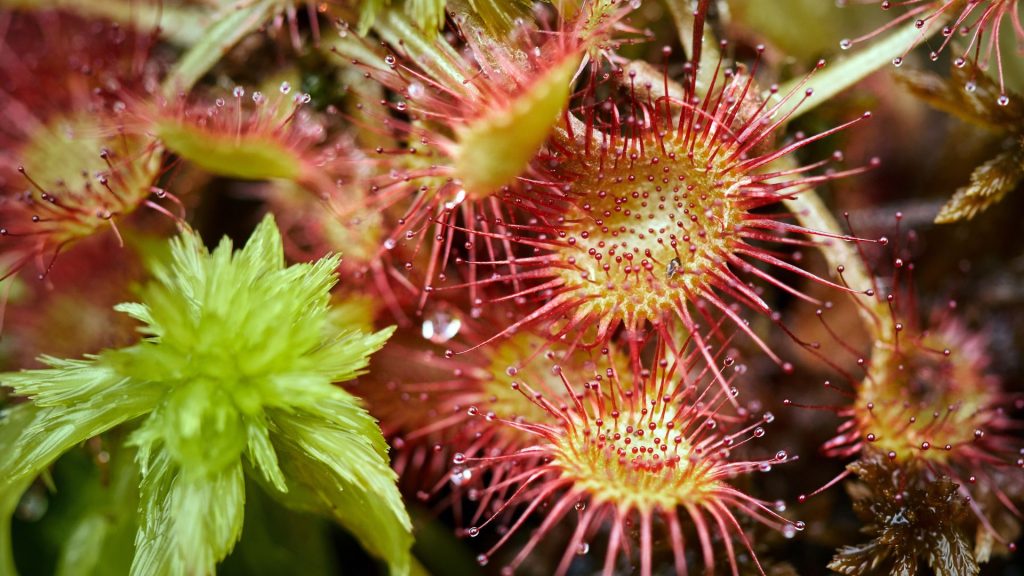Increasingly, flower growers are turning their attention to all sorts of exotic plant species. Carnivorous houseplants are the real leaders in this category. They belong to different families, but in the process of evolution, they adapted to catching insects to receive food, and, therefore, they can get energy not only through photosynthesis.
How Do Carnivorous Plants Catch Insects?
There are two types of insect catching:
- Active, when the organs of the plant move. This type is inherent to the Venus flytrap – the leaf blades slam shut when lightly pressed, thereby capturing the insect.
- Passive, when the plant has sticky secretions on the leaves or all sorts of traps.
Who doesn’t want to have such an unusual and useful plant in their flower collection, especially in summer? Today we want to tell you about the most popular carnivorous plants and how to grow them.
Types of the Best Carnivorous Plants
Venus Flytrap
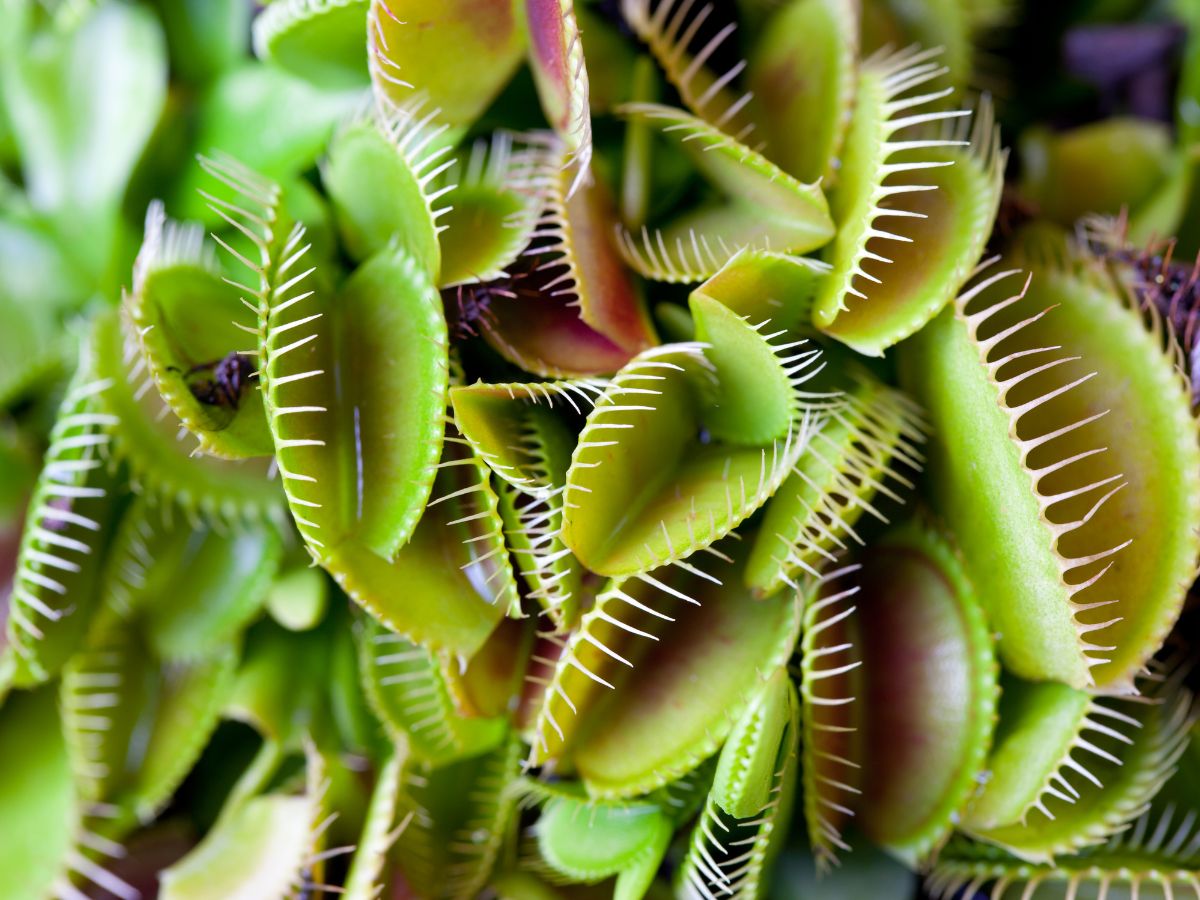
This carnivorous plant for home hunts with special traps that are located at the tips of the leaves. While it is waiting for prey, the petals are slightly open. But as soon as the insect crawls inside and disturbs a few sensitive trichomes on the surface, the “cage” instantly slams shut. This happens in a split second.
After this, the Venus flytrap releases special enzymes to get all the nutrients from the victim. It takes about a couple of days to digest an insect, and sometimes more than a week – it all depends on the size of a plant. Then Venus flytrap is opened again to continue hunting.
Sundew
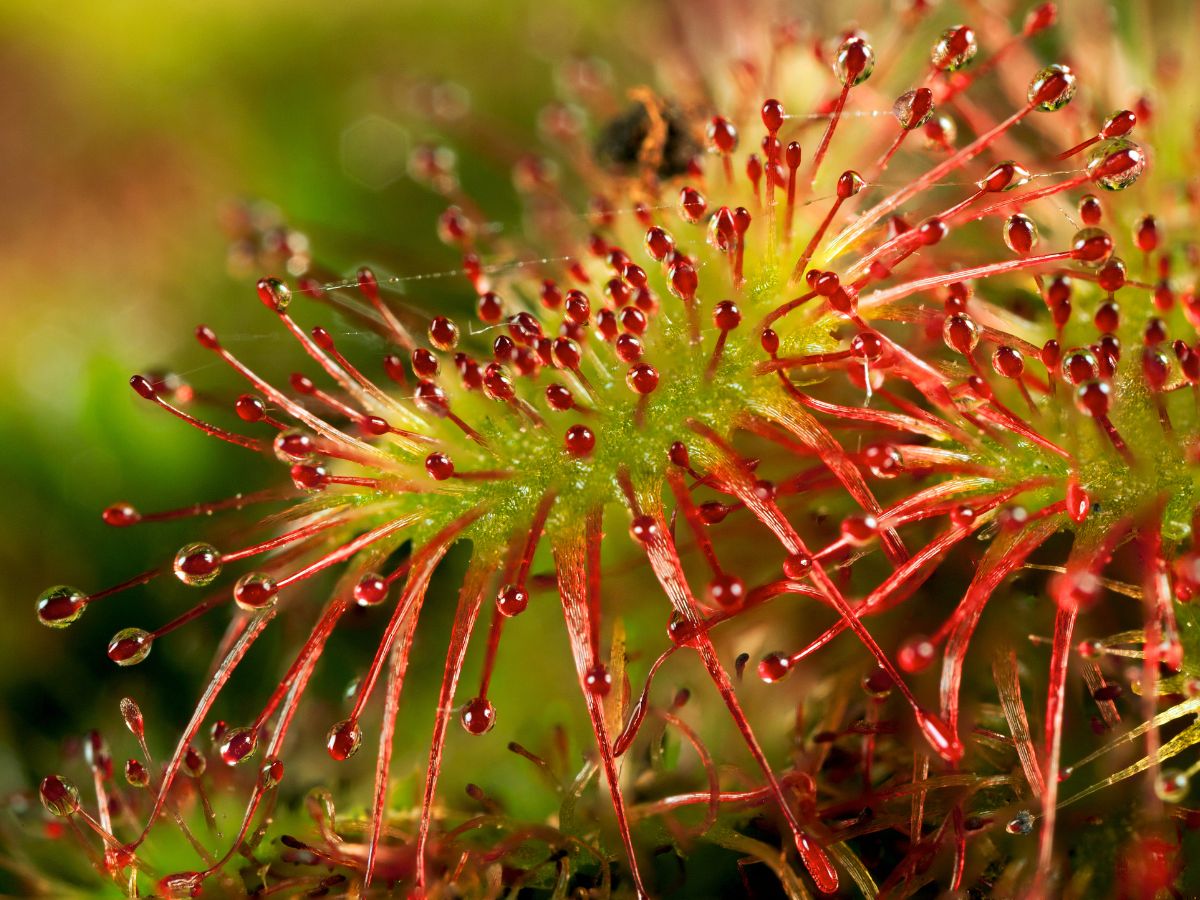
The list of the best carnivorous plants cannot but include the sundew, which is radically different from the previous plant.
This is a carnivorous plant that attracts with its brightly colored trichomes and outlandish pubescence. The plant got its name from the sparkling drops on the trichomes, which transform sundew into a radiant miracle. Its big advantage is that it is quite unpretentious, which makes it the easiest carnivorous plant to grow. The only thing to know about sundew plant care is that they like the bright sun but can also handle some shade, as long as soil stays moist and humid.
Sundew leaves are very sensitive. Don’t underestimate the bloom of this beautiful indoor carnivorous plant. Flowers with a double perianth and five petals are collected in spike-shaped inflorescence.
Sundews paralyze insects with a special sticky secretion containing alkaloids and digestive enzymes. The edges of the leaf after the capture of the victim are closed as if wrapping around the insect. Digestion takes several days, after which the leaf opens again. The speed of leaf folding is different for different types of sundew (from several seconds to several minutes).
Nepenthe
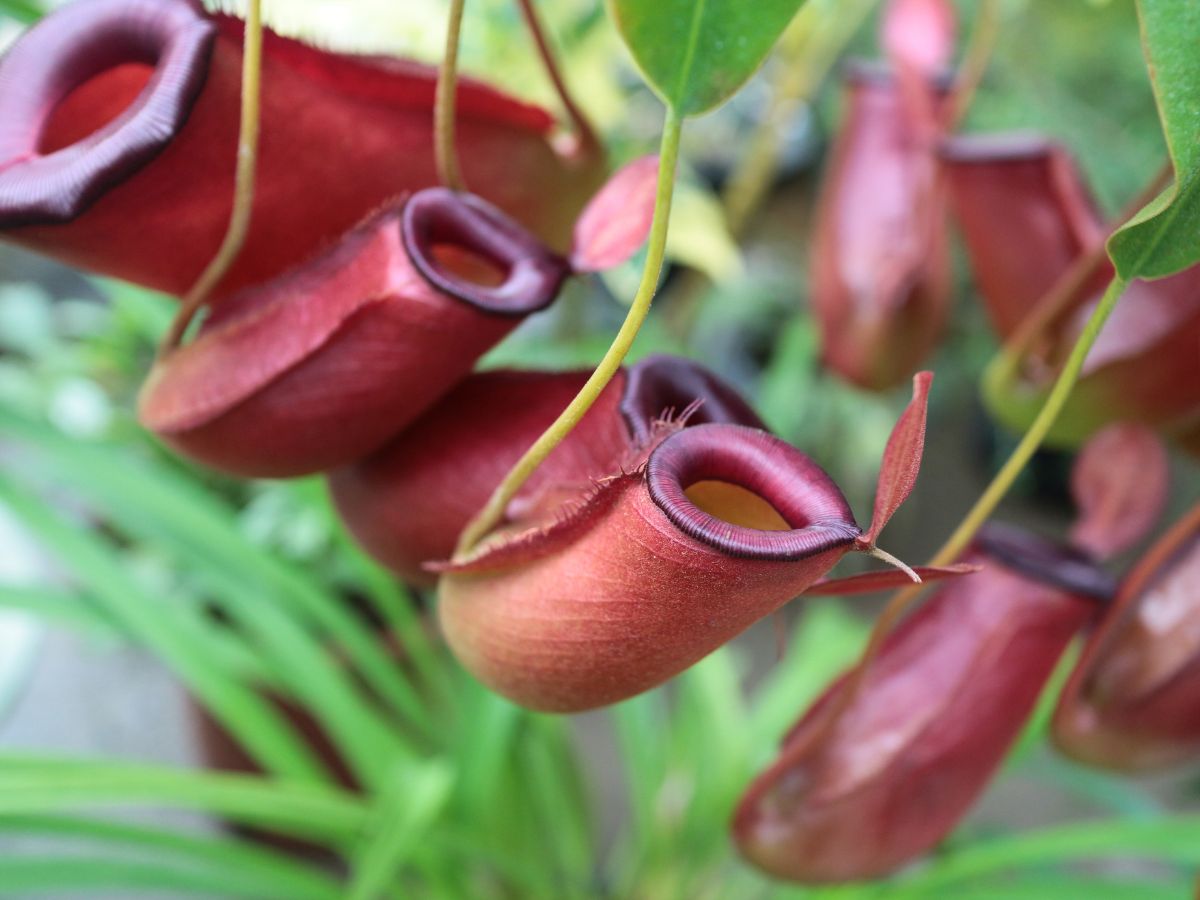
Nepenthe (another name is Tropical Pitcher Plant) is perhaps the most spectacular and vibrant carnivorous plant on our list. In nature, these plants that eat flies are large lianas with ligneous stems, capable of rushing down the trunks of trees tens of meters in height. In indoor culture, this tropical carnivorous plant is limited to 2 meters and can be grown on supports. The leaves of nepenthe are large, with a convex middle vein and a pointed tip.
The shape of the nepenthe straps resembles vessels: a flattened base and a narrowed top, a kind of neck – they are very decorative. They look like outlandish huge flowers, which are painted in a variety of bright spotted patterns with red, white, and light green hues. It is difficult to call the flowering of nepenthes spectacular, but on this outlandish plant it is perceived as another exotic “touch”. Although indoor hybrids bloom very rarely.
Pinguicula
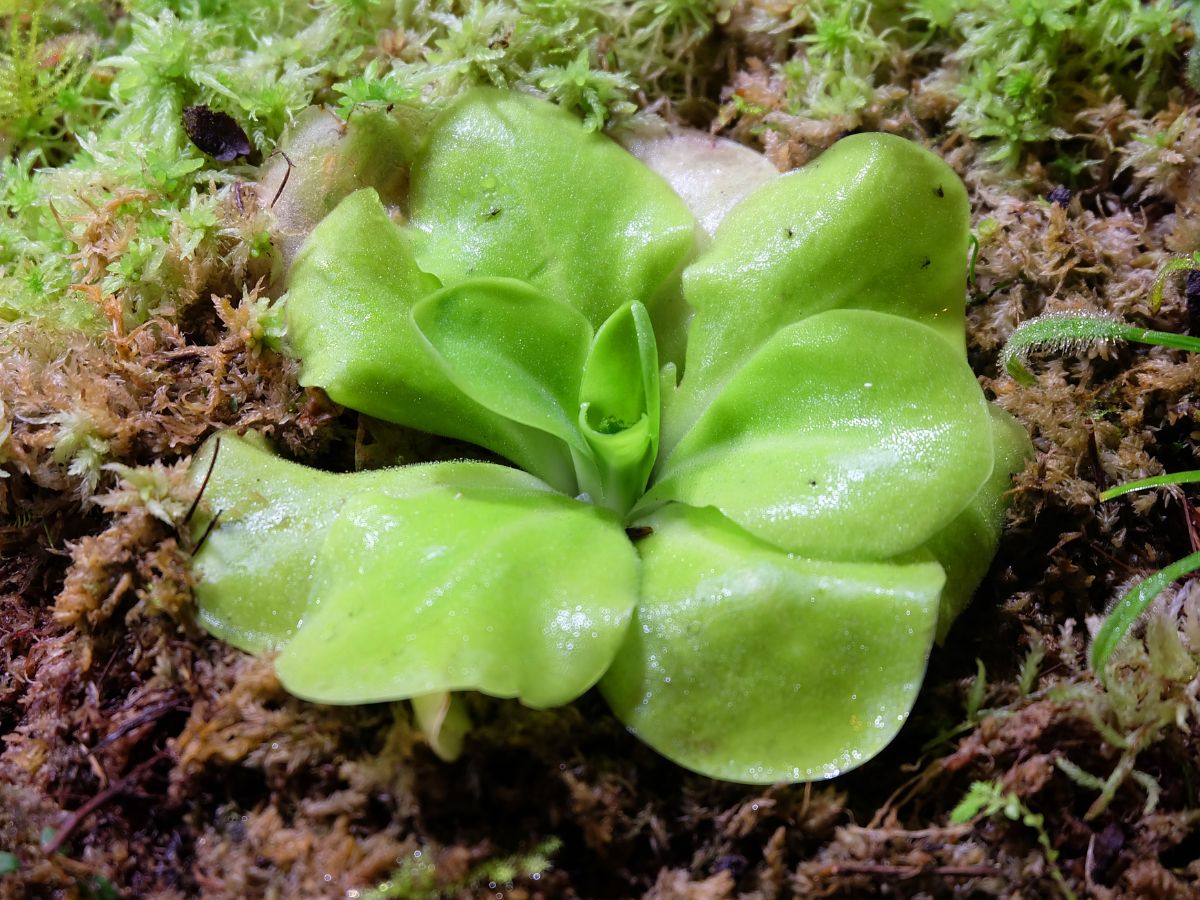
Pinguicula (also known as Butterworts) is one of the best carnivorous plants for beginners. It is quite unpretentious and easy to care for. This insectivorous plant has a simple hunting device: its fleshy leaves are covered with a special slimy and sticky secretion. Insects stick to it. When the victim is caught, the plant releases additional enzymes to digest it. And if the insect is large and resists, the leaves of the plant curl smoothly, preventing it from getting out.
For normal growth, this plant needs a temperature of 25-28 °C (77-82 °F) in the warm season and about 15-18 °C (59-64 °F) in the winter. The Butterworts feel comfortable in diffused lighting and partial shade. Remember that it must be protected from direct sunlight.
Air humidity must be at least 50%. You need to water the plant regularly – with distilled water through the pan. The ground should always be moist, but not like a swamp. Spraying is not required as it can damage the leaves.
Sarracenia
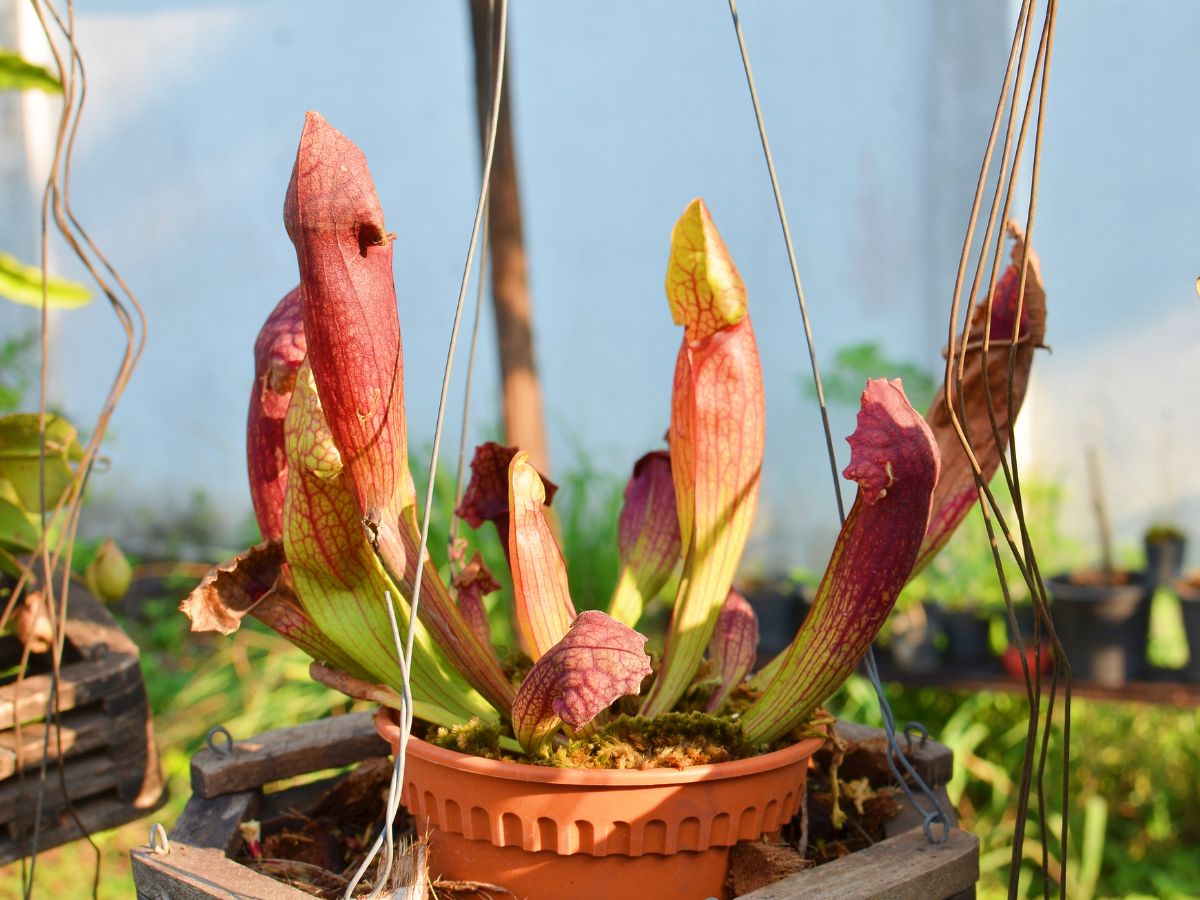
This flower that eats insects is similar to nepenthes in hunting methods and is one of the easiest carnivorous plants to keep. Its large leaves, “jugs”, are directed upwards, and the “lid” either does not cover them at all or does it partially. The traps are bright enough to interest the insects.
The prey is also attracted by the aromatic, sweet juice secreted by special glands. Victims that fall inside the trap easily slide to the very bottom, and cannot get out. After that, the digestion process begins.
How to Care for Carnivorous Plants
Caring for carnivorous plants is slightly different from caring for other houseplants, as it requires special attention due to their unique natural habitat.
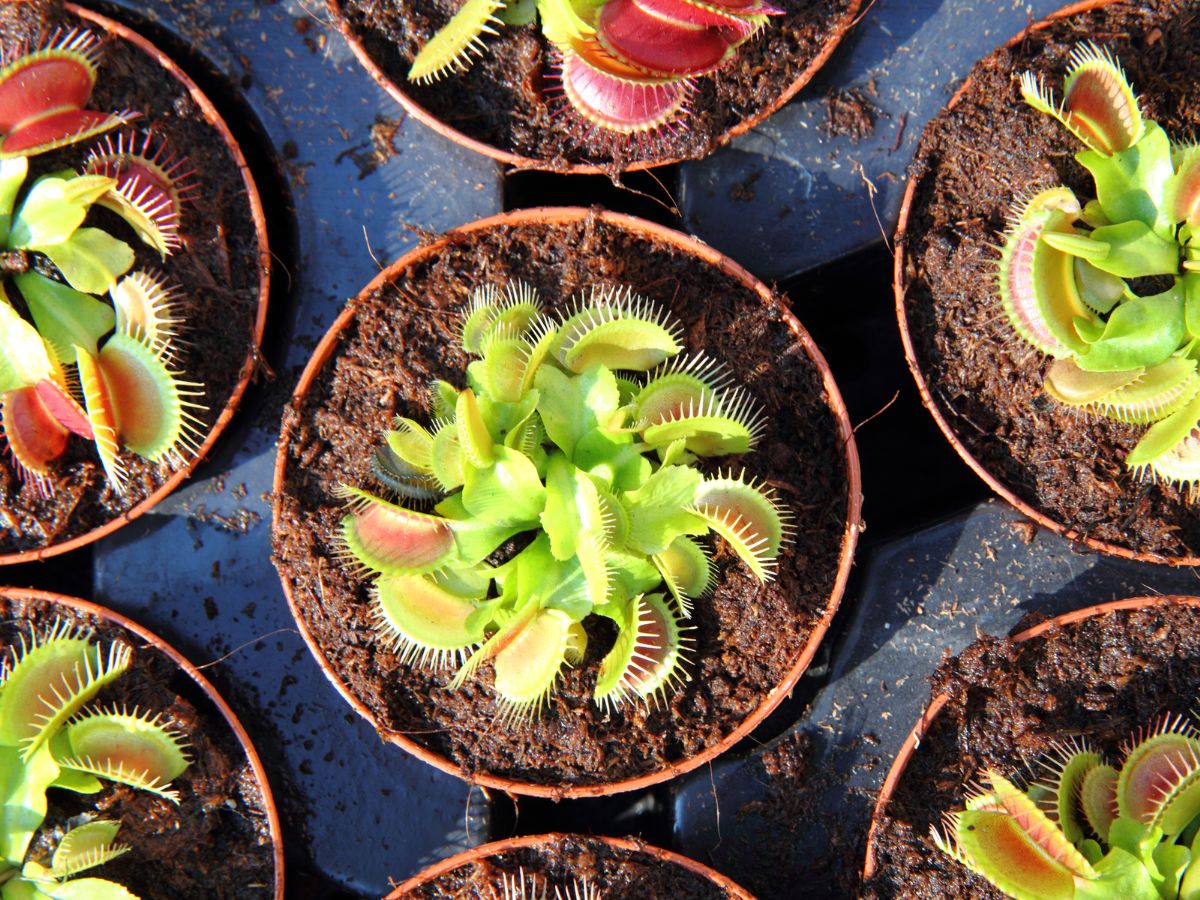
Carnivorous Plant Soil
The potting mix for carnivorous plants should be moist and well-drained, as in nature many of them live in swamps. If you want to achieve the best possible success, we recommend that you use a potting mix of coarse sand and sphagnum peat moss in a 50/50 ratio. You can easily make this potting mix yourself.
Can you use succulent soil for the Venus flytrap? The Venus flytrap is indeed similar to a succulent in its some requirements. For this reason, some believe that succulent soil can be used for this plant. But this is not at all true! Such soil can harm the Venus flytrap since the high content of various nutrients can not only weaken but even burn the roots of the plant! For the Venus plant, it is best to use nutrient-free soil.
Temperature
The temperature regime required for plants depends on the species and the temperature in natural habitats. Representatives of the flora from the temperate climatic zone – Sundew, Pinguicula, Venus flytrap, and Sarracenia – feel good at a temperature of 18-22 °C (64-71 °F). At the same time, they do not suffer at all when the temperature drops to 10-12 °C (50-53 °F). And they can even endure adverse conditions when the thermometer drops below 0 °C (32 °F).
Watering
To keep carnivorous plants alive, it is best to place the plant pots in a saucer filled with water to keep the roots moist at all times. Water them only with rain or distilled water, as spring or tap water can cause significant harm.
Lighting
For indoor carnivorous plants, bright sun is best, so keep them by a south-facing window. During spring and summer, you can also take your plants out on the balcony or display them in the yard. The main thing is to make sure that the plants are protected from drafts. All the carnivorous plants mentioned above (except some varieties of sundew) hibernate in winter, so move them to a cooler place and away from bright light from November to February.
Feeding
Now comes the fun part. If you want to grow a carnivorous plant indoors, but your apartment is not filled with insects, you may need help finding food. You can, of course, feed them with flies or other insects that you accidentally crush, but most likely this would not be enough. Therefore, get a can of blood worms from the pet store (they are sold as fish food). Do not feed the plant more than one insect per week.
The Best Pot for Carnivorous Plants
Ceramic or plastic pots are best for carnivorous plants. Unglazed terracotta pots should be avoided, as they dry out the soil rather quickly. Moreover, over time, they can leach salts into the soil. You can choose pots with drainage holes and place them in saucers of water, or choose pots without holes to keep the soil moist at all times.
What Happens If You Touch a Carnivorous Plant?
Don’t worry, the plant won’t hurt you! They only catch and digest insects. What’s more, humans are composed of another protein. However, the plant should not be touched frequently. Better not to bother it at all. The fact is that their leaves, which form a trap, can only close a certain number of times before the plant dies. Thus, over-stimulation brings them closer to death. In addition, closing the leaves of the plant also makes them unavailable for photosynthesis.
Although carnivorous, these cute plants make a great gift for a flower lover who wants to create an unusual indoor plant garden. Caring for them is not as difficult as it might seem. The quality of the water for irrigation or spraying plays an important role. Remember that impurities and salts from tap water can kill the plant. If you follow this recommendation, these carnivorous indoor flowers would delight you for a long time.


